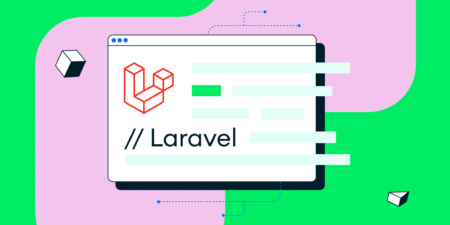Table of Contents
- The Need for Intelligent Test Automation
- What is Tx-SmarTest?
- Key Features of Tx-SmarTest
- Business Benefits of Using Tx-SmarTest
- Future-Proofing Your QA with AI and ML
- Summary
The automation testing market is projected to reach $49.9 billion by 2026. This represents a fundamental shift in how enterprises are approaching software quality assurance. Businesses are investing heavily in AI and ML technologies to upscale intelligent test automation solutions where precision, quality, and agility are necessary. However, to support this, organizations will need a robust tool like Tx-SmarTest to facilitate faster releases enabled with DevOps CI/CD processes. Earlier, the testing process used to be slow and full of bugs because most QA tasks were handled manually. But today, automation and AI are leading the charge.
This blog will discuss how Tx-SmarTest facilitates this shift and offers businesses a smarter test automation solution.
The Need for Intelligent Test Automation
As software systems become complex, traditional test automation struggles to keep pace with changing business requirements. Manual scripting, rigid test cases, and maintenance-heavy frameworks can slow release cycles and increase the risk of bugs in production. This is where intelligent test automation offers a smarter, more adaptive approach.
Intelligent automation integrates machine learning, predictive analytics, and self-healing capabilities to help teams test faster and more efficiently. It reduces manual effort and improves test coverage and accuracy. In today’s agile and DevOps-driven environments, it’s becoming a necessity.
Tx-SmarTest exemplifies this intelligent approach. It combines AI-driven components like the Accelerator for rapid code generation, the Migrator for seamless transitions, the Analyzer for in-depth insights, and the Predictor for forecasting potential defects. Together, these components enhance test coverage, reduce defect slippage, and streamline the automation process, making Tx-SmarTest a pivotal solution in modern test automation strategies.
What is Tx-SmarTest?

Tx-SmarTest is an AI-enabled, comprehensive platform developed by Tx to accelerate software testing and enhance quality. It seamlessly integrates with DevOps CI/CD pipelines, leveraging artificial intelligence (AI), machine learning (ML), deep learning, and neural network algorithms to identify edge test cases and automate them efficiently.
The platform comprises four core components:
- Accelerator: Expedites automation through code generation, documenting test cases, creating automation skeletons, and increasing test coverage to reduce defect slippage.
- Migrator: Facilitates seamless migration of key assets and automation scripts, ensuring continuity and efficiency in testing processes.
- Analyzer: Employs intelligent bug tracking to analyze and identify system errors, enhancing the accuracy of testing outcomes.
- Predictor: Utilizes predictive analytics to forecast potential defects, enabling proactive decision-making and risk mitigation.
Key Features of Tx-SmarTest
Tx-SmarTest stands out because it can integrate with various tools across the software development lifecycle. It connects with popular DevOps CI/CD systems, test management platforms, and defect tracking tools, ensuring that testing is not a siloed activity but a continuous part of development.
Another standout feature is its support for Tx-HyperAutomate frameworks, which enhances script reusability and allows for rapid automation scaling.
Additionally, Tx-SmarTest provides intuitive and role-based dashboards that deliver actionable insights across different levels of the organization, from QA teams to executive leadership. These dashboards simplify decision-making by offering real-time data on test results, defect trends, and automation progress. Together, these features make Tx-SmarTest a powerful solution for enterprises aiming to modernize their testing practices while maintaining speed and quality.
Business Benefits of Using Tx-SmarTest
Tx-SmarTest offers a wide range of business benefits that can significantly improve the efficiency and effectiveness of software testing. Accelerating automation through AI-driven code generation reduces the need for manual intervention, allowing teams to deploy test cases much faster. This boosts the overall speed of the testing process and accelerates time-to-market. Additionally, it helps discover potential impacts by analyzing data from the codebase and test assets. This ensures that testing efforts are focused on the most critical areas of the application, improving coverage and minimizing the chances of defects slipping through.
The accelerator also enhances error detection with intelligent bug tracking, enabling teams to identify system errors early in development. This reduces the cost and effort associated with fixing defects later on. Tx-SmarTest’s seamless migration capability ensures that organizations can smoothly transition their key test assets and automation scripts from older systems to more modern ones without disruption, saving time and resources.
Future-Proofing Your QA with AI and ML
Aspect | How AI/ML Future-Proofs QA |
Automated Test Generation | AI algorithms can automatically create test scripts by analyzing application behavior and past data, reducing manual effort and enabling rapid scalability. |
Defect Detection and Prediction | Machine learning models identify patterns in test results and user behavior to detect defects early and predict where future issues are likely to occur. |
Test Prioritization and Optimization | AI evaluates risk areas and usage patterns to prioritize test cases that matter most, optimizing resource use and reducing test execution time. |
Self-Healing Automation Scripts | AI-driven tools detect changes in the UI or code and automatically update test scripts, minimizing failures due to minor application changes. |
Enhanced Predictive Analytics | ML analyzes historical test and defect data to provide actionable insights and forecasts, helping teams make proactive quality decisions. |
Improved Test Coverage | By continuously learning from system data, AI ensures better test depth and breadth, targeting edge cases that manual testing might overlook. |
Faster Testing Cycles | Intelligent automation reduces test maintenance and execution time, aligning QA with fast-paced DevOps and agile delivery models. |
Summary
Tx-SmarTest is an AI-powered test automation accelerator by Tx that uses UiPath Task Mining components to modernize quality assurance through predictive analytics, automated script generation, and seamless CI/CD integration. It addresses common challenges in traditional QA by reducing manual effort, increasing test coverage, and enabling faster releases. With core components like Accelerator, Migrator, Analyzer, and Predictor, Tx-SmarTest helps organizations achieve agile, efficient, and intelligent testing. Contact our experts now to know more about how Txs’ accelerators can help you upscale your QA initiatives.
The post Tx-SmarTest – Unlock Smarter QA with AI-Powered Platform first appeared on TestingXperts.
Source: Read More


